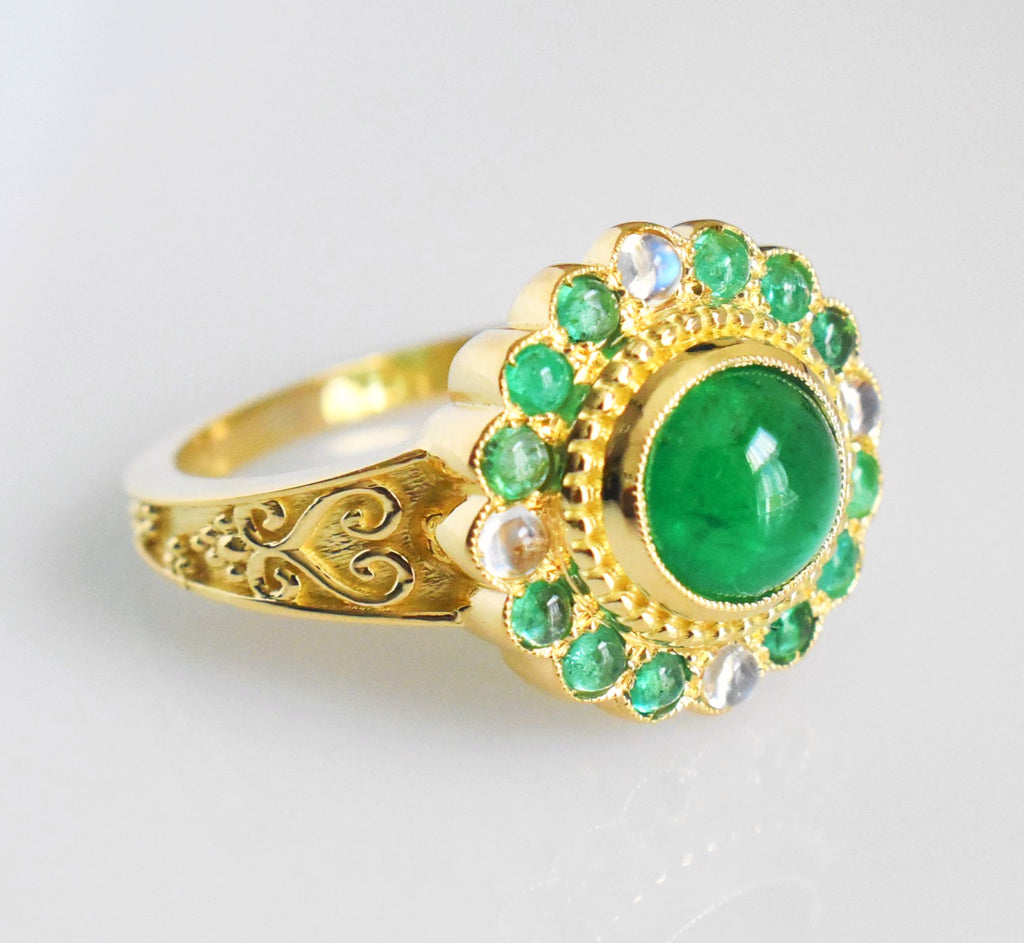Setting Secrets Exposed: What Happens to Your Custom Project in Setting
I don't know if you have noticed but the diamond district tends to be very secretive about what happens behind all those closed doors. Try googling for articles on the diamond district, you will find that most have very little content. But for a little fun and very accurate information, try this article from the New York Times on Diamond District Slang.
Jewelers rarely if ever disclose who does their work, not even to each other. I think that's a pity because there's not only much to be learned for those not in the industry. I personally am in awe of some of the skill that is exhibited by jewelers, setters, engravers, and even polishers – who are least likely to get many kudos for their work. Each step in making these little masterpieces is the result of years of experience, and in most cases, also involves considerable financial investment, both in terms of equipment needed and risk management.
Last week I made a little video to demonstrate some of this, and provide you some insight into one of the aspects of the jewelry making process: setting. As most of you know already, Pierre Berberoglu (you'll find him on facebook if you like to make friends) has been my setter for about 7 or 8 years now. Pierre started working in the jewelry industry at 14, back in Turkey at a time when Armenians didn't have many options of what jobs to pursue. Pierre, who also owns 4 Ben and Jerry's Ice cream shops, finds the work he does both challenging and soothing. He feels in control when he's at the bench, he says. And that despite the super expensive pieces he works on, many of which require not only a steady hand but also an enormous amount of concentration.
Our Ring Models Before Setting
Pierre's office can be found on the 8th floor of a well secured doorman building, and you have to be let into two doors to get in. There's a camera at the door and if he doesn't know you he will ask through the speaker who you are. If you are new, you can say who sent you or who recommended you, that might open the doors. Or not, if he deems it insecure. Pierre's safe has to protect a lot of client's projects so it's best not to deal with anyone you don't know.
Cecile Raley Designs job envelopes for custom projects
Your Cecile Raley Designs custom project will travel through the diamond district in a job envelope like this, with all important information written or sketched on the envelope
Pierre sits at his bench concentrating hard approximately 5-6 hours a day, the rest of the time is taken up talking to the likes of me, or dropping off and picking up a project. His huge microscope is a necessity for micro pave work, which he executes with perfection even while chatting with me.
Trays of gemstones in my safe, waiting to be set into custom jewelry
In the video, we go over a few projects for clients, including one for me. I have him explain a bit about the challenges. While Pierre has been gem setting for nearly 40 years, the kinds of gems I bring are ones even he has rarely or never heard of. So for any new gem (i.e. the hauynes I started bringing three years ago) we have to discuss how it might behave under his tools. He told me once that setting paraiba melee is like setting soap bubbles. He almost doesn't use tools at all when he presses the prongs in (occasionally he uses his fingernails). I also have him set a lot of odd shapes, i.e. small pave ovals or squares, which is rarely done.
A Cecile Raley Designs custom CAD design with a pave double halo of gemstones
Ethan, my other setter, who is also a bit more camera shy, so you aren't seeing him here, actually practiced setting colored gems for two years before we both felt comfortable working on my projects. Before going out on his own, Ethan set diamonds for a company that almost exclusively did micro pave for Tiffany's. While presenting it's own challenges (Tiffany's is a stickler for perfection), a setter who has set diamonds for years is usually very heavy handed and has to learn to hold back the force he uses for diamonds. This can result in a lot of breakage at first. And keep in mind that almost every setter in the US sets almost only diamonds. This makes what I do very much off the beaten path.
Dozens of custom projects in my Jersey City office, waiting to be taken to the NY diamond district, or just arriving back from there
For a little extra entertainment, here's a short clip of Pierre discussing how he's setting a diamond tennis bracelet:

Detail of Hand Cut Scoop Down Pave by Pierre
Continue reading






